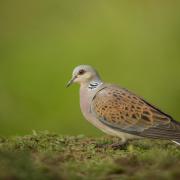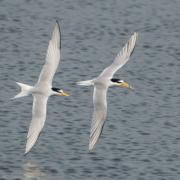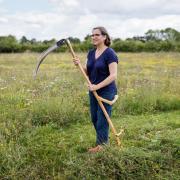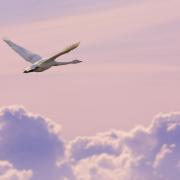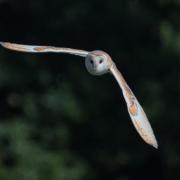There’s no more beautiful sight in summer than a meadow filled with butterflies nectaring on wildflowers. But can Suffolk’s butterflies survive the challenges facing them? Photography tutor and nature writer Kiri Stuart-Clarke investigates

The sheer beauty and transformational nature of butterflies has long made them a subject of mystery, inspiration and fascination.

The ancient Greek word for butterfly, psyche, is also the word for soul – no wonder these beautiful creatures are embedded in our superstitions and folklore. Another, more fanciful, possible origin of the word stems from an old belief that witches or fairies disguised themselves as butterflies and stole butter.

Butterfly collecting was the height of fashion in Britain for nearly 200 years. Throughout much of the 18th and 19th centuries the English countryside saw avid collectors scouring the countryside with nets. Fortunately butterfly recording and photography has replaced collecting as a hobby among naturalists.

Today around 60 species of butterfly are permanently resident in the UK, compared to many hundreds of species in continental Europe. Suffolk plays host to 35 resident and visitor butterflies – around 60% of British species.
A caterpillar’s life is pretty hazardous. They’re vulnerable to all sorts of predators, such as birds and parasitic wasps whose larvae will eat them alive. Many resort to subterfuge to stay alive – some camouflage themselves among twigs and foliage, >>
>> others such as the peacock use defensive armoured spikes, while several blue butterflies trick ant colonies into protecting them as pupae in their burrows while undergoing metamorphosis. The butterfly’s complex life cycle and adaptation to specific habitats, localities and food plants means they are incredibly sensitive to their environment and are one of the first species to react to changes. Because of this they are considered an indicator of the health of an entire eco-system.
Despite our long love affair with these delicate, ephemeral creatures, according to Butterfly Conservation, they are now one of Britain’s most endangered groups of wildlife. In the past half century, over 70 species have been lost. Life’s far from easy if you’re a butterfly living in Britain.
Butterflies in Britain belong to one of five family groups.
Nymphalidae – many of the most colourful and frequently spotted, such as tortoiseshells, peacocks and commas, are members of this sizeable family, which includes Admirals and Emperors, Fritillaries and Browns. These butterflies are quite large, often display vivid colours and markings and are pretty tough. Many can survive two seasons, hibernating in log piles, sheds or evergreen ivy, and their caterpillars often have armoured spikes to deter predators.
Lycenidae – the next largest family group, consisting of 18 butterflies, made up of blues, coppers, hairstreaks and metalmarks. This group includes some of the smallest and most beautiful butterflies. Suffolk is home to eight Lycenidae, many of which have specialist habitats and aren’t always easy to see. Hairstreaks often spend their time around tree canopies, while blues can have very particular tastes in grassland conditions and ant species. Females are actually brown and can be mistaken for a close relative, the brown argus.
Pieridae – the large white, infamous among gardeners for its love of brassicas, is one of the 18 Pieridae or ‘whites’ family. This group also includes the beautiful orange-tip, green-veined white and buttery-yellow brimstone butterfly.
Hesperiidae – named after their rapid darting flight, skipper butterflies make up this family group. Suffolk is home to four of Britain’s eight resident skipper species. Often orange or brown, these small butterflies live in rough grassland on long coarse grasses and often close up their wings when perching. They are great fun to watch as they dart up and spar with each other over their territories.
Papilionidae – the rare and striking swallowtail butterfly is Britain’s lone member in this group, an occasional visitor to Suffolk from its breeding area in the Norfolk broads.
The biggest threat to butterflies is habitat and food plant loss. The post war industrialisation of farming led to the destruction of hedgerows and intensive farming of virtually every inch of a field. Wide verges and areas of set-aside once left for wildflowers and butterflies were increasingly farmed out of existence.
In the last century we’ve lost 97% of our flower-rich hay meadows, and ancient woodland, rich in biodiversity, now accounts for just 2% of Britain’s land area. Hedge flailing and widespread use of chemical insecticides, herbicides and fertilisers have all taken a toll on pollinating insects. Housing developments, changes in land management and climate also pose threats to butterfly survival. The increasing fragmentation of habitat makes it harder for colonies to sustain themselves through interbreeding. Even the more common species such as the small tortoiseshell are seen less and less often.
Today 20% of Suffolk’s butterfly species are in trouble, with five of the county’s 35 butterfly species listed as ‘priority species’ earmarked for protection under the UK’s Biodiversity Action Plan. They are the unflatteringly named Dingy Skipper, elm tree dependent White-letter Hairstreak, the beautiful Silver-studded Blue, honeysuckle-loving White Admiral and our coastal resident the Grayling. A further two, the Wall and Small Heath butterflies are in sharp decline and undergoing population studies. They and the grayling are butterflies of heathland and coast so face particular danger from erosion and habitat changes around sea defences.
But it’s not all bad news. With growing recognition of the vital role that butterflies and other insect pollinators play in the food chain and eco-system, concerted efforts are being made to conserve and protect butterflies through biodiversity action plans. One Suffolk success story is the Silver-washed fritillary, which has been increasing in the county and appears to have established itself as a permanent resident. Populations of other more flexible species such as Meadow Browns, Ringlets, Gatekeepers and Speckled Wood, as well as Suffolk’s skipper butterflies, are also largely holding up.


















